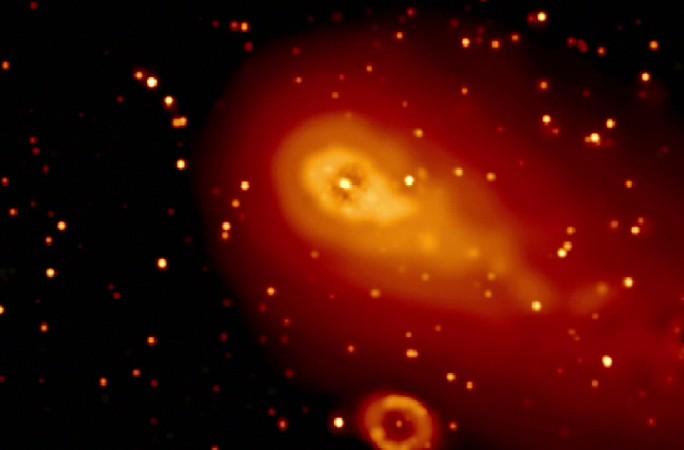
Slooh online observatory's telescope in Chile spotted the nucleus of a comet dubbed Comet 73P /Schwassmann-Wachmann rupture into two pieces on February 12.
Also Read: This is how NASA plans to make better weather predictions!
The comet has been shattering into pieces for over two decades. The first time this space rock was seen splitting into three pieces in 1995 and the same was observed again in 2006, when it shattered into more than 30 pieces which makes it look like an ongoing process, according to a statement by Slooh.
Due to this, it's estimated that the comet might disintegrate before orbiting around Sun. On March 16, it will be at the closest proximity with Sun.
"This puts the comet's nucleus under tremendous stress from the sun's gravitational forces — and it appears that this may have been responsible for carving up the nucleus in two," said Paul Cox, a Slooh astronomer.
Comets refer to a cluster of rocks, ice and debris which emerge from the Oort Cloud or the Kuiper Belt -- situated far from the solar system in its outermost extension, farther from Neptune and they harbour icy objects.
Originated from the Kuiper Belt, Comet 73P is a short-period comet, which got a short orbital period that's less than 20 years; hence it is classified as a "Jupiter class" object.
Jupiter is known for destroying comets, like it destroyed comet Shoemaker-Levy 9. In case comet 73P subsists after its forthcoming trip to Sun, it will pass by Jupiter within a distance of 50 million kilometres (31 million miles) in 2025 and it might get destroyed by the gas-giant too.
The solar winds and radiation emitted by Sun is another major risk for the comet, as they are emitted by Sun constantly and destroy the surface of the smaller bodies exposed to it. This feature is responsible for creating the tail of the comets known as 'coma', Space.com reported.
"It certainly feels like it's only a matter of time before comet 73P is destroyed, disintegrating into a trail of cosmic dust," Cox said.
"One thing is certain — if the end-is-nigh for this lump of primordial space rock, Slooh members will be the first to see its demise live in Slooh's telescopes," he added.
This comet will be analysed by Slooh members in the forthcoming weeks from their observatories located in Canary Islands and Chile.

















